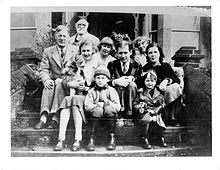Penn Museum (Phil.) hosted “Unwrapping Egyptology and the Occult: The Curious Case of Battiscombe Gunn and Aleister Crowley” 10/25. Dr. Steve Vinson, PhD discussed the case Battiscombe Gunn (1883-1950), still remembered as one of the most insightful Egyptologists of his generation and his association with with Aleister Crowley. Steve Vinson laid out the evidence for the relationship between these two – references to Gunn in satirical pieces on A.E. Waite (Gunn being a member of Waite’s esotheric group “The Independent and Rectified Rite” around 1910), as well as in Crowley’s diaries (he’s mentioned by name in an account of a dream for one), and in some letters. Vinson was interviewed for Thelema, NOW! wherein he discusses all this in detail. Also, this talk drew heavily from Vinson’s chapter in the recently published Histories of Egyptology. One interesting fact that emerged in the lecture is that it and the book chapter was largely based on the wikipedia page on Gunn http://en.wikipedia.org/wiki/Battiscombe_Gunn which was authored by his granddaughter Janet. When Vinson got in contact with Miss Gunn he offered her a co-author credit on the book chapter as it drew so heavily on the wiki piece.
At several points Vinson drew conclusions regarding Thelema and Crowley that missed the mark, innocently enough…when an audience member asked by Crowley called himself “The Beast 666” Vinson admitted he didn’t know that much about his life and beliefs. Following the lecture I approached him to clarify what one might consider an important point – his statement about the Stela of Ankh F N Khonsu: “The stela’s text comprises a few unremarkable extracts from the ancient Egyptian Book of the Dead but Crowley was to base much of his personal religious philosophy on the stela.” I explained that the stela played a key role in Crowley’s reported reception of the channelled text we know as Liber Al vel Legis but the stela’s text itself was not an important basis of Thelemic religious doctrine. He responded, “well it’s still the basis of his religious philosophy if you fudge it.” !?!?!?! At which point I politely bid him adieu. Other disappointing misapprehensions included his claim that Crowley’s erstwhile Golden Dawn mentor Allan Bennett and Crowley had drifted apart because of Bennett’s eventual dismissal of “Crowley’s type of ceremonial magick” whereas Bennett had indeed gotten involved in Buddhism and eventually became so committed to that he moved to Ceylon and took monk’s vows – where Crowley would eventually visit him and claim his primarily belief system to be Buddhism. Likewise Vinson would explain Bunn and Crowley’s eventual separation as due to the latter’s disavowal of mediumship – citing his published dismissal of the “Rosemary” case – a young woman who’s following believed her to be speaking in ancient Egyptian, with a Babylonion accent; whereas Crowley, as well the Golden Dawn and Theosophical Society all dismissed “spiritism” as a practice plagued by fraud or at best subject to deception by various spiritual larvae.
But while Vinson’s understanding of Crowley, ceremonial magick and early Western practice of Eastern spiritual systems was somewhat lacking, the scholarly research he did in finding documentation of the relationship between the Prophet of the Lovely Star and one of the leading translators and philologists of the Victorian and Edwardian eras was excellent and should open the door into further research. Gunn is credited with providing Crowley with a new translation of the Stela of Ankh N F Khonsu around 1912, and as the latter really had no knowledge of ancient Egyptian it does raise the question as to whether Gunn was the source for the texts that Liber Resh vel Helios, parts of the Gnostic Mass etc were based on.


